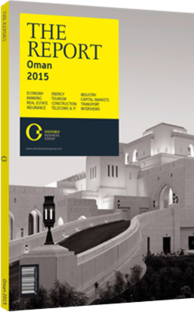Banking
Bank Sohar was established in March 2007 as a commercial bank following an initial public offering (IPO) in December 2006. The bank was launched with authorised capital of OR100m ($259m) and paid-up capital of OR50m ($129.5m). The bank has since grown its balance sheet substantially to become the fourth-largest bank by assets in Oman. The bank’s total assets grew from OR420m ($1bn) at end-2007 to OR1.88bn ($4.6bn) by end-2013. In 2009, three years after its founding, the bank reported its first profit, with profits having grown every year since thanks to expanding loan assets and interest income. However, since 2011 the bank has focused more on improving profitability than growing assets, resulting in a rise in net interest spreads and return on equity – the latter increasing from 8% in 2009 to around 16% in 2013.
Oman had traditionally not allowed Islamic finance in the country; however, that policy was reversed in 2011 with a decree permitting sharia-compliant lending and Islamic banking windows at conventional banks. The Central Bank of Oman (CBO) published the new regulatory framework for Islamic banks in 2012. Pursuant to the decree, conventional banks rushed to start Islamic banking windows and two new Islamic banks were formed. In order to raise capital for setting up the new sharia-compliant windows, the conventional banks issued bonds and rights issues, while the two new Islamic banks held IPOs in 2012.
Bank Sohar raised OR10m ($25.9m) in a rights issue offered in January 2013 to boost its issued capital and mobilise funds to establish its Islamic banking window. Since the launch of Islamic banking, sharia-compliant assets in Oman have grown modestly, with most Islamic banks still incurring losses. Bank Muscat’s Islamic unit was the only one to post profits in 2013, while Bank Sohar’s Islamic banking window posted its first profit in the first quarter of 2014. To date, all other Islamic banks remain unprofitable.
In 2014 Bank Sohar grew its assets by an impressive 16% year-on-year in the first six months of year.
The bank also substantially improved its profitability ratios, such as the cost-to-income ratio and total return on shareholder equity. As a result, Bank Sohar saw the largest increase in profits in the first six months of 2014 of all local banks.
Shareholders of Bank Sohar have been rewarded by its solid financial reporting as the stock price has outperformed the market over the last two years. In 2013 Bank Sohar’s stock price gave a return of 18%, compared to the MSM 30 Index’s 19% return. Likewise, in the first nine months of 2014 Bank Sohar’s stock price was up 22% against the MSM 30’s 10%.
Bank Sohar has also witnessed growth in assets and profitability since inception; however, going forward, the banking industry in Oman will become more saturated and its competition fiercer, as international players become more aggressive and Islamic windows take market share from conventional banks.
In addition, the CBO has recently taken steps that will curb growth of consumer banking in future, with the introduction of new consumer banking guidelines for debt burden ratios and a lower revised lending rate ceiling. In the current environment Bank Sohar is focusing more on boosting profitability by improving return on equity rather than growing assets.
Since 2013, Bank Sohar has been the subject of a lot of takeover talk, as Bank Dhofar proposed to combine the two banks by means of a swap ratio. If it goes through, this deal would create Oman’s second-largest bank by assets. Nothing concrete has come from the talks as yet, though the two banks continue to discuss merger options. The rationale behind the management’s proposal is that the merged entity would be in a better position to compete and help finance major projects in the country.
Bank Sohar is again going to tap the secondary market through a rights issue worth OR40m ($103.6m) in 2014. This issue will help increase the Basel-mandated Tier 1 capital on the bank’s balance sheet, in addition to supporting future growth of the bank.
You have reached the limit of premium articles you can view for free.
Choose from the options below to purchase print or digital editions of our Reports. You can also purchase a website subscription giving you unlimited access to all of our Reports online for 12 months.
If you have already purchased this Report or have a website subscription, please login to continue.

